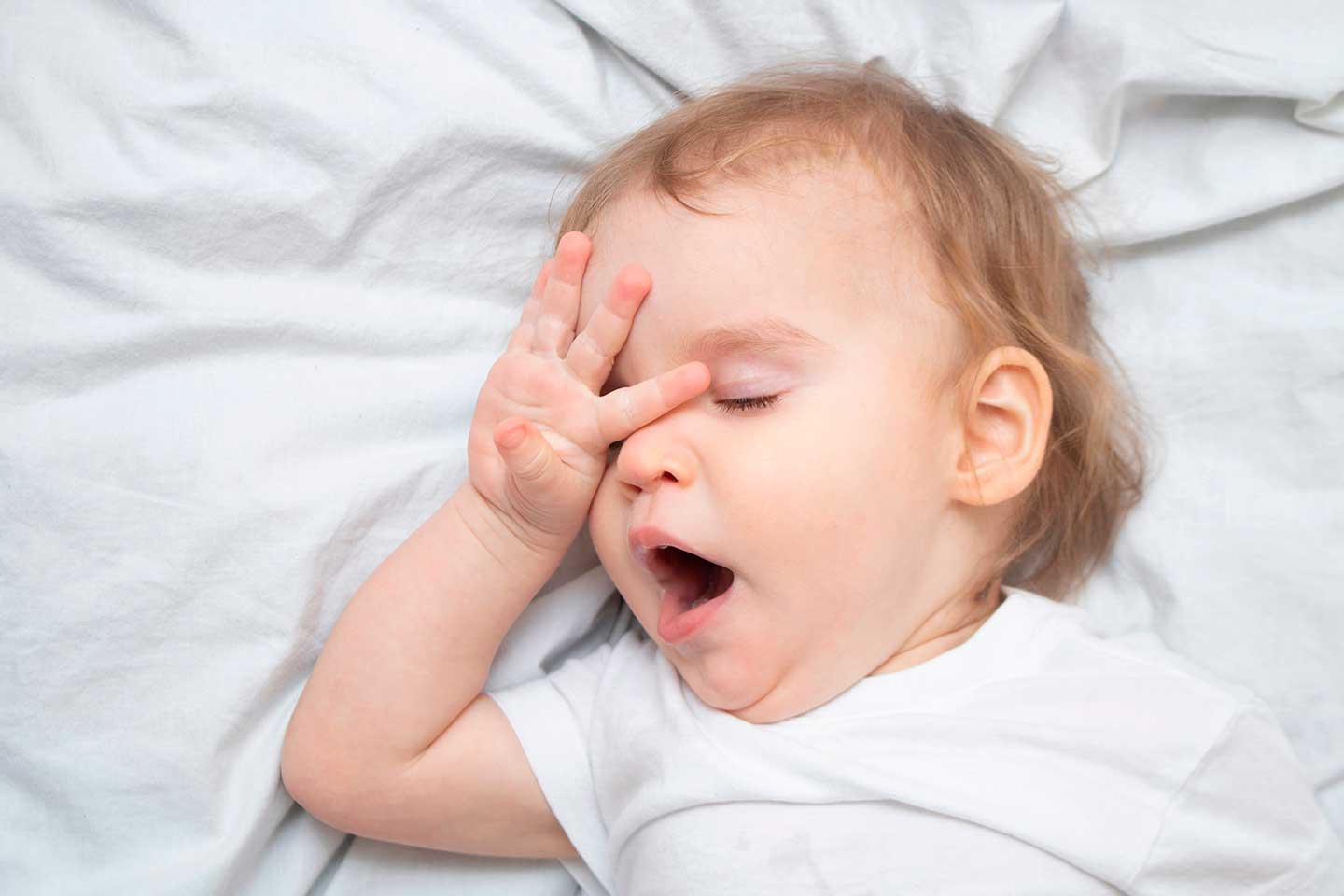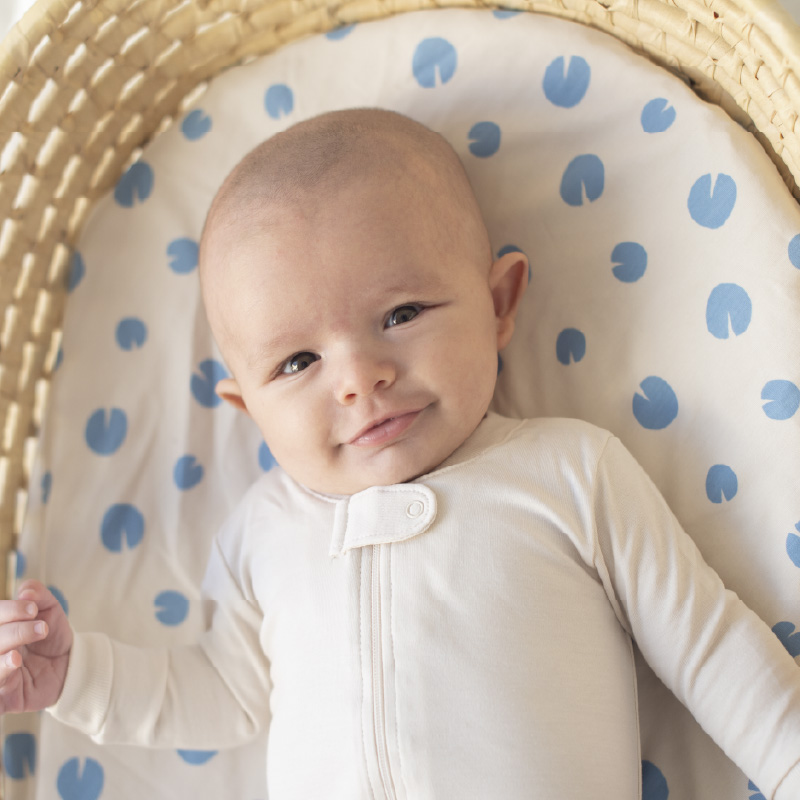Does it seem like your newborn sleeps all day and parties all night (AKA baby day night confusion)? You’re not alone. Read on to find out how baby sleep patterns are developing and what you can do to help your baby get the sleep they need.
Your Rockin’ Blinks Cheat Sheet
- The internal mechanisms that allow babies to understand day vs night don’t really develop until about 2 months of age.
- Newborn sleep is often chaotic, no matter how hard you try to get your baby on a schedule.
- Increased melatonin and cortisol production will help babies develop longer stretches of consolidated sleep at night and more stable periods of wakefulness during the day.
- As your baby’s sleep matures, there is a precise internal timing system that predicts the shifts between night and day.
- The majority of babies are capable of sleeping for at least 8 hours uninterrupted by the age of six months.
- You can keep your baby well rested during the day by following their sleepy signs.
Wouldn’t it be nice if your newborn baby could tell the difference between day and night? If she kept her parties confined to the daytime hours and understood night time was the right time to catch some Zzzzs? Unfortunately, it’s not something you can teach. Your baby has to get there on their own. But don’t worry! She will around 2 months. Here’s how you can figure out what’s happening before then.
How to Tell You’re in the Newborn Sleep Stage
We know you can’t wait until your baby is ready to sleep longer at night. But for now, you should expect (and accept!) that newborn sleep is a little chaotic and there’s not much you can do about it. Here’s why your baby is only sleeping in bits and pieces for the time being:
Human sleep is organized by two processes: a buildup of sleep pressure, and by an internal timing mechanism, our circadian rhythms. Your newborn baby is still working on developing these.
Sleep pressure is pretty straight-forward. The longer you’re awake, the greater the buildup of your need to sleep. As you sleep, that sleep need is reduced. When this process is working smoothly, sleep pressure is like see-saw gently moving back and forth. Although this see-saw balance of sleep and wakefulness sounds pretty simple, the internal mechanisms that allow babies to keep the see-saw in balance don’t really develop until about 2 months of age. While your baby can, in fact, sense that they are tired, for newborn babies, this usually happens after just 45-60 minutes of awake time (and that includes feeding time!). What this means for you is that your baby may be grumpy and irritable, particularly in the evenings, even if you’re doing everything possible to help your baby nap well during the day. While you can’t push this process to happen any faster than nature allows, you can do your best to look for sleep signs during the day and offer a nap when you see them. As your baby grows, he will be able to stay awake longer, and by 4 months this “awake window” could be around 2 hours long. But until the circadian rhythm matures, the time for naps (and they’re length!) will remain irregular.
If sleep pressure was the only mechanism regulating your baby’s sleep, nothing would anchor sleep to the night and alertness to the day. Your baby would continue to sleep for short periods of time and be awake for a bit around the clock. But as sleep matures, your baby begins to develop a precise internal timing system that predicts the shifts between night and day. What does this timing system entail? As your baby matures, his body temperature, hunger hormones, and stress levels begin to rise prior to waking up in the morning — a pattern that remains the same through adulthood. These signals provide an internal alarm clock that prepares the body to rise, eat, and be alert for the day. In the evening, our body temperature drops, metabolism winds down, digestive processes slow, and alertness decreases. Your baby will start to develop these patterns soon, too. These internal indications of nighttime allow humans to refrain from eating or going to the bathroom overnight, and help us slow the mind down so we can sleep.
Circadian rhythms are like gears constantly turning on the inside to allow us to match our physical, mental, and social activity with the time of day. The first light of day is the strongest signal to keep this internal machinery matched with the outside world. But initially, babies have a weak circadian rhythm, given to them by the hormones that crossed through the placenta. Your baby’s circadian rhythms will mature around 6-8 weeks (counting from the estimated delivery date), helping him to develop longer stretches of consolidated sleep at night and more stable periods of wakefulness during the day.
How to Tell There’s Longer Nights of Sleep Coming Your Way:
You’ve been as patient as you possibly can be…and not getting much sleep. But around 6 to 8 weeks of age, your baby is finally able to sleep longer stretches at night – which means you get to, too! Here’s how you know you’ll soon be in the clear.
- Babies begin to produce measurable amounts of the hormone melatonin by six weeks of age. Melatonin is not directly responsible for causing sleep, but rather for signaling the timing of sleep. It is made in direct response to light fading at the end of the day, so even small amounts of light prevent the production of melatonin. At this stage, it’s important to ensure that your baby is sleeping in the darkest room possible to help them produce appropriate levels of melatonin… and help their body understand it’s nighttime.
- Babies begin to rhythmically cycle cortisol, the hormone responsible in part for alertness and increased appetite, by around one month. Cortisol levels are naturally higher in the morning and decline through the afternoon and evening, reaching their lowest point in the early part of the night. That natural progression will help your baby get into a routine of lower alertness and appetite at night — and signal it’s time to go to sleep.
As melatonin and cortisol continue to increase, babies will begin sleeping for longer periods of time at night. Most of this rapid period of change takes place within the first four months of life, and the majority of babies are capable of sleeping for at least 8 hours uninterrupted by the age of six months.
Want to know more about newborn sleep? Check out our resource page here.
The Ritual of Putting Your Baby to Sleep
The Truth About Sleep Training









